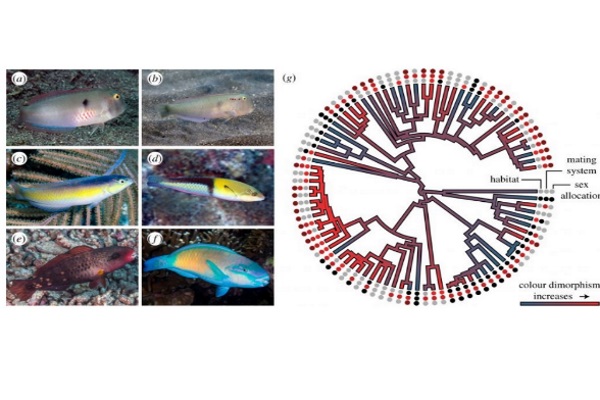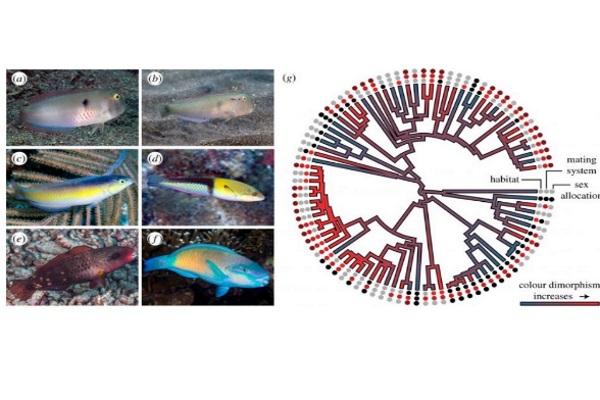In a recently published article from Proceedings B, the authors showed that clear water and structural refuge of the coral reef habitat created an environment where visual signals characteristic of pronounced colour dimorphism could evolve.

Colour dimorphism is known to be responsible for the beautiful array of colours displayed by coral reef fishes. In a recently published article from Proceedings B, the authors showed that clear water and structural refuge of the coral reef habitat created an environment where visual signals characteristic of pronounced colour dimorphism could evolve. We spoke to lead author, Jennifer Hodge, from the Department of Biological Sciences, Clemson University about these findings in the article ‘Colour dimorphism in labrid fishes as an adaptation to life on coral reefs’.

What does your paper tell us and were there any surprising observations made?
Our paper confirms that wrasses and parrotfishes living on coral reefs are more colour dimorphic than those living in other habitats – a common observation that had not previously been tested. We show that the magnitude of colour dimorphism increases, as predicted, with increasing sexual selection, indicated by different systems of mating and sex change. However, coral reef association best explains the magnitude of colour dimorphism, but surprisingly, this is not because sexual selection is stronger on coral reefs, as was predicted. Instead, our results suggest that coral reef habitat provides the ideal environment for the evolution of conspicuous visual signals. The clear water of coral reefs enhances visual perception, while the structural complexity creates solid, physical barriers that conspicuously coloured fishes use as protection from predators.
What implications does your research have on the field?
This research demonstrates the importance of environmental context. Despite other influential selective forces – in this case sexual selection – environmental characteristics ultimately determine the effectiveness of functional traits and their associated costs. This research further highlights the importance of coral reef habitat in generating diversity among fishes. Coral reefs are increasingly threatened – often losing structural complexity and becoming degraded following disturbance. The results of this work indicate that such environmental changes have the potential to impact fishes in ways not previously considered.
Tell us about yourself, your group and your research?
I am an integrative evolutionary biologist, currently working as a postdoctoral fellow at Clemson University. My research aims to identify ecological factors that promote and constrain the diversity of fishes. To do this I apply cutting-edge phylogenetic and comparative methods to describe patterns of evolutionary change and how they are influenced by ecology. Such an approach allows me to address big picture questions that help to illuminate the processes important in generating diversity, and ultimately help us to predict the ecological components important to maintaining it.
What was your overall experience like publishing in Proceedings B?
I like that review histories are now published alongside Proceedings B papers. I feel this increases accountability of authors and reviewers and makes the whole process more transparent. I also appreciate the timeliness of each step from submission to publication. I look forward to submitting more papers to Proceedings B in the future.
Proceedings B is looking to publish more high quality research articles and reviews in the fields of ecology and evolution. If you have an idea for a review, we strongly encourage you to submit a proposal by completing our proposal template and sending it to the journal. More information about the journal and the submission process can be found on our website.



